Comparing Skin Rashes: Causes & Symptoms
By Clara Vandermeer / Oct 27
Almost 90% of individuals will face a skin rash at some point in their lives. Understanding the causes and triggers of these rashes can empower you to take control of your skin health. With that in mind, let's delve into the essential insights from our exploration of skin rashes.
Delve into the visual breakdown of common skin rash causes and effective treatment approaches, highlighting key factors for better skin health management.
Allergic Reactions: Pollen, Food, Cosmetics
Infections: Bacterial, Viral, Fungal
Contact Dermatitis: Irritants, Metals
Autoimmune: Eczema, Psoriasis
Drug Rashes: Medication Side Effects
90% of people experience a rash in their lifetime.
Early identification guides effective treatment.
Skin rashes are a common occurrence for many people, but their causes and characteristics can vary widely. From mild irritations to more severe conditions, understanding skin rashes is essential for maintaining overall skin health. Did you know that nearly 90% of people will experience some form of skin rash in their lifetime? That's a significant number! With this in mind, let's explore what skin rashes are and why it's critical to identify their causes.
A skin rash is a noticeable change in the texture or color of your skin. It can appear as redness, bumps, or patches and may be accompanied by other sensations like itchiness or discomfort. Understanding the different types of rashes is key to proper treatment. Common types include allergic reactions, infections, and conditions such as eczema. The prevalence of these rashes among individuals often leads to confusion, as many people may misinterpret their symptoms. More information about rashes can be found on MedlinePlus, a valuable resource for health information.
Recognizing the underlying causes of skin rashes is crucial for effective treatment and prevention. By pinpointing what's triggering your rash, you can take proactive steps to avoid recurrence. For instance, some rashes may stem from allergic reactions, while others might be caused by infections or irritants. Understanding these factors can lead to timely medical intervention and better skin management.
As someone passionate about dermatology and skincare, I believe that early recognition and understanding are key to achieving healthy, comfortable skin. By learning about the causes of skin rashes, we empower ourselves to make informed decisions for our skin health.
Allergic reactions are one of the most common triggers for skin rashes. These can occur from various sources, including pollen, certain foods, and cosmetics. For example, if you notice a rash after trying a new lotion, it might contain an ingredient that your skin reacts to. Common allergens include:
Being aware of these triggers allows you to take preventative measures, which can greatly reduce your chances of developing an allergic rash in the future. It's all about listening to your body and recognizing the signs!
Infections can also lead to various skin rashes. Bacterial infections, such as impetigo, can cause red, crusty sores. Viral infections like chickenpox lead to itchy spots all over the body. Fungal infections, such as ringworm, present as circular rashes with a distinct edge. Each type of infection has unique characteristics:
Understanding these distinctions can help you identify when to seek medical advice. If symptoms persist or worsen, consulting a healthcare professional is essential.
Contact dermatitis occurs when your skin reacts to a substance it has touched. This could be anything from harsh cleaning products to certain metals. Common irritants include:
Avoiding known irritants or using protective barriers like gloves can significantly reduce the likelihood of developing contact dermatitis. Remember, your skin is your body’s largest organ, and taking care of it is vital!
Autoimmune diseases can also manifest as skin rashes. Conditions like eczema and psoriasis are characterized by persistent rashes that often require ongoing management. Eczema can cause dry, itchy patches, while psoriasis typically results in red, scaly plaques. Understanding these conditions can help you or someone you know manage symptoms more effectively. Here are key symptoms to watch for:
Recognizing these symptoms early can lead to better management strategies and improved quality of life. If you suspect an autoimmune condition, don't hesitate to reach out for professional guidance.
There are various forms of dermatitis to be aware of, including eczema, seborrheic dermatitis, and allergic contact dermatitis. Each type has distinct characteristics:
By understanding the different types of dermatitis, you can more accurately identify your symptoms and seek appropriate treatment. Remember, knowledge is power when it comes to your skin health!
Insect bites and heat rashes can lead to uncomfortable skin irritations that are often overlooked. Insect bites might cause localized redness and swelling, while heat rash occurs when sweat ducts become blocked, leading to tiny red bumps. Here are some common conditions to keep an eye on:
Being mindful of these everyday conditions can help you react promptly and seek relief when necessary. Remember, even small irritations deserve your attention!
According to a study, nearly 1 in 4 Americans will experience a skin rash at some point in their lives. This highlights the importance of understanding your skin and recognizing the triggers that lead to these conditions. By being informed, you can take proactive steps to manage your skin health!
When you’re dealing with a skin rash, finding relief is often a top priority. It’s important to explore a variety of treatment options tailored to your specific needs. From home remedies to prescription treatments, understanding your choices can help you manage your skin more effectively.
At What Are Rashes, we believe in empowering you with knowledge about what works best for your skin. Below, I’ll share practical tips that can aid in recovery and prevention.
Many people find comfort in home remedies when trying to soothe mild rashes. Here are some effective options you might want to consider:
These remedies can provide temporary relief and are often easy to find around the house. However, if your rash persists or worsens, seeking professional advice is always a good step!
While home remedies can be effective, some rashes may require more advanced treatment. Here are some prescription options that dermatologists might recommend:
It’s essential to follow your healthcare provider's recommendations closely. Each treatment plan should be tailored to your specific condition to ensure optimal results.
Taking proactive steps can significantly reduce the likelihood of future rashes. Here are some preventive measures you can incorporate into your daily routine:
Implementing these strategies not only helps in preventing rashes but also promotes overall skin health. It’s about creating a mindful approach to your skin care routine.
Sometimes, medications can lead to skin rashes. Understanding these drug rashes is crucial for proper treatment. If you suspect your rash is a reaction to medication, here’s what to know:
Being alert to changes in your skin after starting a new treatment can help in addressing potential issues early. Always communicate openly with your healthcare provider about any concerns you have.
A1: Skin rashes can be caused by various factors, including allergic reactions (e.g., pollen, food, cosmetics), infections (bacterial, viral, fungal), contact with irritants (contact dermatitis), autoimmune conditions (eczema, psoriasis), and drug reactions.
A2: Identifying the underlying cause of a skin rash is crucial for effective treatment and prevention. It helps to prevent symptoms from worsening, guides appropriate treatment choices, and helps you avoid future flare-ups by knowing what triggers them.
A3: Home remedies like aloe vera, coconut oil, oatmeal baths, and cold compresses can provide temporary relief for mild rashes by soothing inflammation and itching. However, if a rash persists or worsens, or if it is caused by an infection or severe allergic reaction, professional medical advice and prescription treatments may be necessary.
A4: Eczema and psoriasis are common autoimmune conditions that manifest as chronic skin rashes. Eczema is characterized by itchy, inflamed skin, while psoriasis typically results in thick, red patches covered with white scales.
A5: Preventive measures include identifying and avoiding known triggers, regularly hydrating your skin, wearing protective clothing, and choosing gentle, unscented, and hypoallergenic skincare products. Keeping a journal to track potential allergens or irritants can also be very helpful.
Here is a quick recap of the important points discussed in the article:

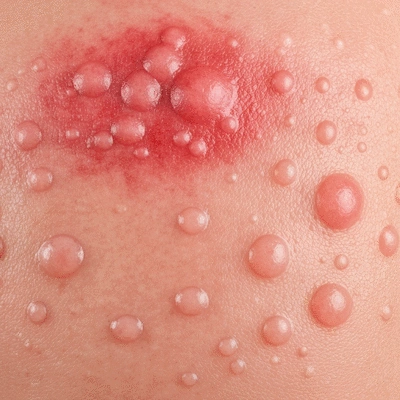
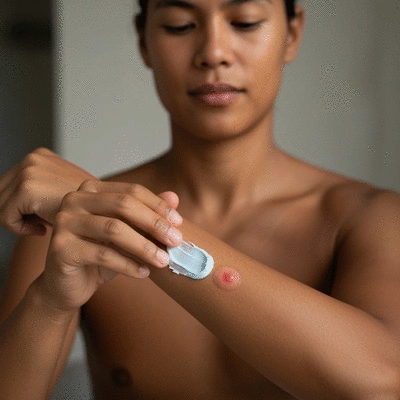
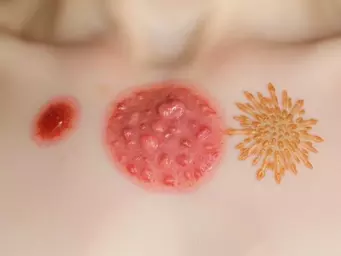 Comparing Skin Rashes: Causes & Symptoms
In the realm of skin health, recognizing the different types of rashes can be the difference between
Comparing Skin Rashes: Causes & Symptoms
In the realm of skin health, recognizing the different types of rashes can be the difference between
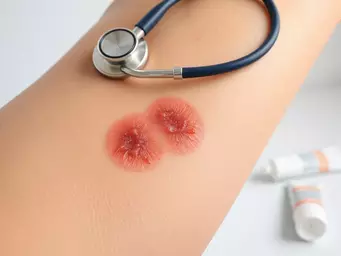 Identifying and Treating Ringworm
Have you ever wondered how a simple skin rash could create so much confusion? Understanding ringworm
Identifying and Treating Ringworm
Have you ever wondered how a simple skin rash could create so much confusion? Understanding ringworm
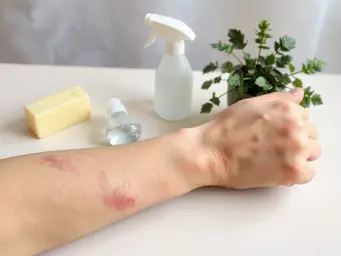 Understanding Contact Dermatitis Causes
Everyday encounters with common products can lead to unexpected skin reactions. By understanding the
Understanding Contact Dermatitis Causes
Everyday encounters with common products can lead to unexpected skin reactions. By understanding the